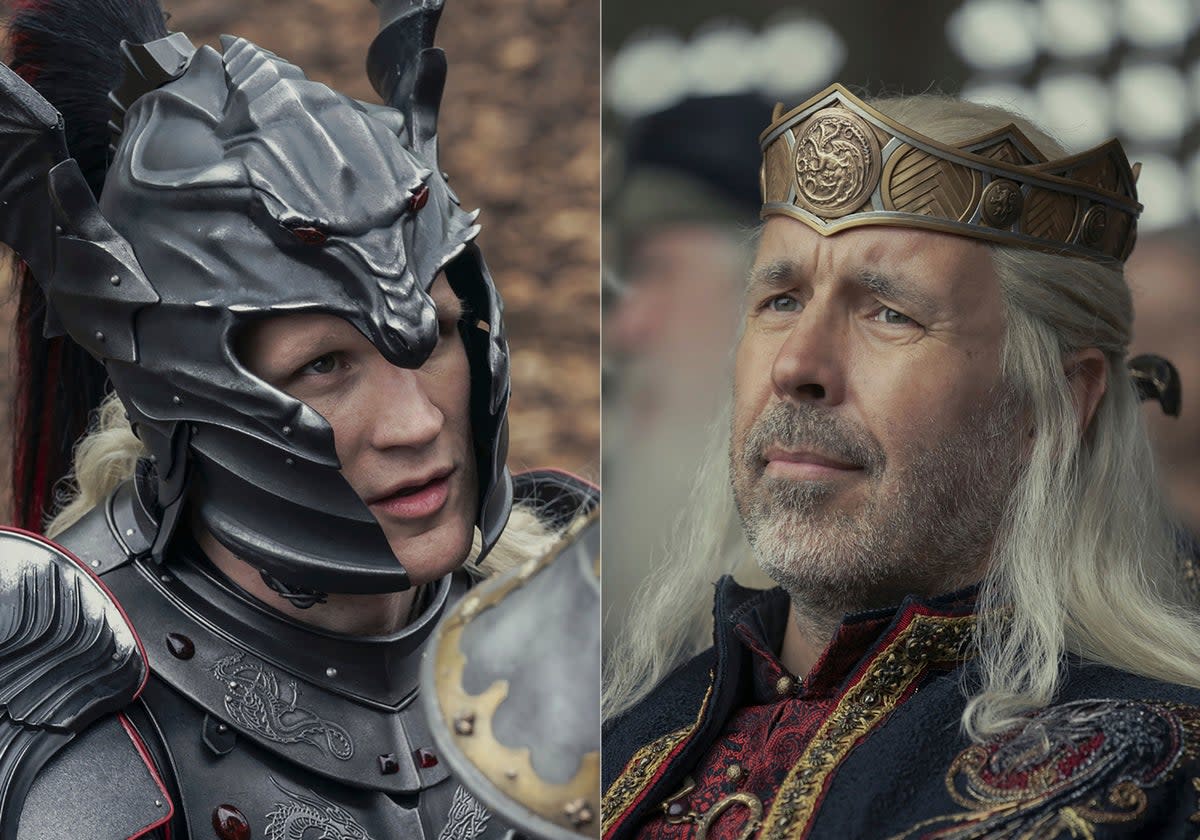'Game of Thrones' prequel keeps dragons, adds diversity

The prequel to “Game of Thrones’’ is set to forge its own storytelling path, with a new set of characters and a more diverse team behind the scenes.
“House of the Dragon” takes place two centuries before the events of the original series, which ended its hit eight-season run in May 2019. The 10-episode prequel begins Sunday on HBO and will be available to stream on HBO Max.
The story focuses on House Targaryen, made famous in “Game of Thrones” by Emilia Clarke’s Daenerys and her fearsome dragons. But don’t expect “House of the Dragon’’ to be a remake of “Game of Thrones,’’ cast member Steve Toussaint said.
“It’s been done and they did it exceedingly well,” said Toussaint, who plays the very rich Lord Corlys Velaryon. “You know you’re in that world, but you’re seeing a different story, different characters, different motivations.”
Among the new faces in the clan is Prince Daemon Targaryen, played by Matt Smith. His villainous character is a lot more complex than he appears to be on first viewing, the actor said.
“I think the reason I’ve had fun is because he’s maybe not just a villain,” he said. “I think there’s actually a huge amount of fragility and depth and inner madness there. ... It's not black and white. It can go either way with Daemon at any point.”
Based on George R.R. Martin’s “Fire and Blood,” the drama was co-created by Martin and Ryan Condal, whose credits include the 2016-19 sci-fi drama “Colony.” Condal is an executive producer and co-showrunner with director Miguel Sapochnik, who brings his experience on “Game of Thrones” to the prequel.
“House of the Dragon,” much like its predecessor, focuses on familial succession with a female heir being overlooked. But Sapochnik notes a key difference between the two series: The team making the prequel is more diverse, including a 50-50 split between male and female directors, including Sapochnik, Clare Kilner, Geeta Vasant Patel and Greg Yaitanes.
There was a conscious push to be inclusive behind the scenes, Sapochnik says.
“We really tried to, as much as possible, hire as many female crew as we could, because we think that’s a really important shift that needs to be both recognized, acknowledged, acted upon, maybe give opportunities to people who don’t get opportunities,” he explained.
The team making “Dragon” is equally as diverse, and — for the fantasy genre — boasts a relative bounty of women in the writers’ room. The gender balance affects the show's story and tone, according to some of its female cast members.
The series opens with an aristocratic council naming Viserys Targaryen (Paddy Considine) as heir to the Iron Throne, bypassing his older cousin Princess Rhaenys Velaryon (Eve Best). But Viserys must have his own heir, with dreams of power held by Daemon, his younger brother, and Viserys’ daughter Princess Rhaenyra (Emma D’Arcy plays the adult version, Milly Alcock the youth).
“You definitely don’t feel like a device or a prop and you don’t feel like the the sexy wench or the mother,” said Olivia Cooke, who plays the adult Alicent Hightower, longtime friend to Rhaenyra. “You feel that you’ve got a fully fledged character which is really nourishing to play.”
The ensemble cast also includes Emily Carey, Graham McTavish, Fabien Frankel, Rhys Ifans and Sonoya Mizuno.
Carey, who plays the younger Alicent, calls the inclusion of women in all aspects of production a step “in the right direction" for the fantasy genre.
Although virtually every female character faces misogyny, each is “still a fully fledged, three-dimensional female character,” Carey said. “They still have multiple other story lines and a whole life away from that misogynistic story line. They’re not just put in the show to serve a purpose. And I think that’s what makes it so special.”
“House of the Dragon” screenwriter Charmaine DeGraté said "it was important for George (R.R. Martin, a prequel executive producer) for it to be this way. Female-driven characters, female-driven shows and female-driven writers rooms just sort of elevates the story. That's a wonderful way to expand the universe.”
—-
Lefferts reported from New York, Lennox from Los Angeles.

 Yahoo News
Yahoo News 
